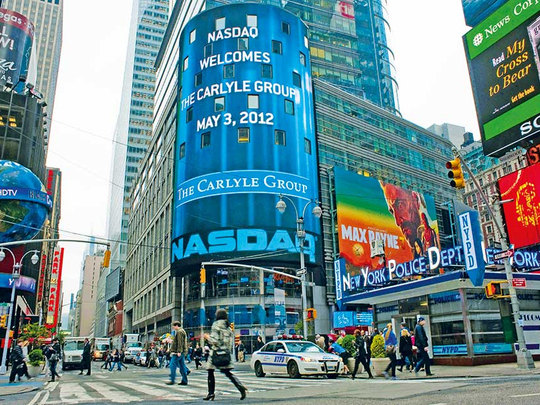
Dubai: Liquidity fuelled by cheap money policies of central banks, low oil prices and lust for growth and yield are driving up the upside of risk assets as investors continue to take risks under the assumption that it could take central banks longer to tighten, according to market analysts.
This year has seen big global stocks gain 10 per cent, bonds gain 4 per cent, as well as the dramatic resumption of a bullish “deflation” trade, according to Bank of America Merrill Lynch investment strategists.
While stock market investors have reverted to the growth theme, bonds investors are back to yield chasing, preparing the ground for asset price inflation and or a potential bubble.
Nasdaq internet index (QNET) has gained annualised return of 80 per cent as CCC rated junk bonds annualising an 18 per cent gain, while emerging markets sovereign bonds annualising a 17 per cent gain.
“Lack of tax reform, lack of strong economic growth, no oil recovery, more geopolitical tension, China credit fears, none of it has mattered thanks to the ongoing central bank ‘Liquidity Supernova’: central banks have purchased a whopping $1.1 trillion (Dh4 trillion) of asset year to date. And the provision of maximum liquidity has been validated by weaker-than-expected global core inflation,” said Michael Hartnett, Chief Investment Strategist at BofA Merrill Lynch.
Analysts say structural changes in the stock markets are also impacting the way the markets are behaving. The diverging trends in flows to passive and active managers in the past 10 years shows clear domination passive fund flows, that is suppressing the typical euphoria normally tangible ahead of market bubbles.
Summer risk
“The summer risk is an equity overshoot. At 2630 the S&P500 index, the ratio of global market cap to global GDP will exceed all-time highs set in 1999 and 2007. These are plausible targets: the longer it takes central banks to tighten, the greater the risk of tech stocks entering a speculative frenzy,” said Hartnett.
Data on valuation, fund flows, and the relationship between equities and bond yields are all good clues that a speculative overshoot has begun. There are nascent signs the markets are in the very early stages of an overshoot. The market cap of many of new tech giants is already greater than the GDP of large US cities: Google is bigger than Chicago, Amazon is bigger than Washington DC. Another breathtaking valuation stat shows at $1,450 billion the combined market cap of Google & Apple is larger than the combined market cap of Eurozone & Japanese financials valued at $1,310 billion.
The Nasdaq internet index, is approaching PE levels (61X) that are as spicy as they were in prior “big tops” in stock markets, and at a time where policy is turning less favourable.
While the US tech stocks are in the early stages of a bubble build up, such signs are feeble in global tech stocks. The PE on the global MSCI tech sector is currently 18X, far below the level reached in March 2000 at 50X. In 2017 tech EPS numbers are strengthening, currently forecast to grow 16 per cent thus undermining the case for excess valuation.
While cheap money remains a key factor in valuation build up, there are no signs of drastic policy action that will be taken to cool the markets in the near future, thanks to the persisting low growth low inflation environment, according to analysts.
“The classic sign of a speculative overshoot in equities is a period of rising stock prices that elicits a rise in bond yields, as fixed income markets start to anticipate central bank action to cool the fever on Wall Street. This occurred in Japan in 1989, in the US in 1999, and at the short-end in the Eurozone in 2007-2008. It is not yet happening,” Jared Woodard, Investment Strategist at BofAML.







